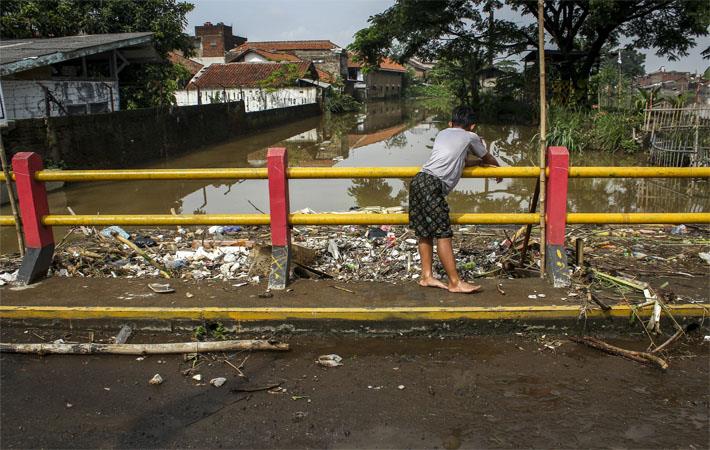Interviews
UK manufacturing much greener compared to overseas: study
31 Oct '19
3 min read

Pic: David Nieper
The practice of offshoring manufacturing amounts to off-shoring pollution, with two-thirds of emissions from UK clothing occurring overseas, according to a report by the University of Nottingham energy innovation and collaboration team. To localise British manufacturing, Derbyshire fashion firm David Nieper commissioned the report on offshore manufacturing.
Forty seven per cent less emissions are generated by manufacturing clothes in the United Kingdom compared to a similar operation in an overseas textiles production base, the report says.
The university team studied the energy and greenhouse gas emissions for the manufacturing operations of David Nieper, which designs and make clothes in the United Kingdom and sells online and through catalogues, as opposed to a garment retailer that manufactures overseas and sells on the British high street.
Renewable energy plays a key part in keeping energy consumption to a minimum. Within the garment production process, the sewing phase typically requires most energy consumption. David Nieper’s solar panels, energy efficient machinery and LED lighting means the average power required to make each garment has been reduced by 37.5 per cent, dropping from 8.03kWh to 5.16kWh per garment.
The report also shows the biggest contributing factor to cleaner and more efficient manufacturing in the United Kingdom is due to the lower carbon intensity of electricity supply network. The United Kingdom has significantly lower carbon emissions per unit of electricity compared to overseas production hubs such as China, Bangladesh and Turkey; therefore production in the United Kingdom has lower direct carbon emissions–making it a more sustainable manufacturing base.
The long distance transportation of goods and component parts, which has become synonymous with the textiles industry, is cited as another environmentally damaging practice and significant contributor to greenhouse gases.
The University of Nottingham report details shipping distances to the UK high street from the three biggest textiles manufacturing centres range from 6,226km from Turkey, 16,123km from Bangladesh and 21,694km from China. Air freight is the worst polluter in the distribution stage, contributing 90 per cent of greenhouse gas emissions.
Another shock statistic revealed by the report is that the energy used in making clothes is dwarfed when compared to the energy used ‘upstream’ in the textile supply chain, in making fabrics as well as printing and dyeing. This accounts for over 70 per cent of the total carbon emissions in garment production emphasising the importance of transparency throughout the entire supply chain.
Forty seven per cent less emissions are generated by manufacturing clothes in the United Kingdom compared to a similar operation in an overseas textiles production base, the report says.
The university team studied the energy and greenhouse gas emissions for the manufacturing operations of David Nieper, which designs and make clothes in the United Kingdom and sells online and through catalogues, as opposed to a garment retailer that manufactures overseas and sells on the British high street.
Renewable energy plays a key part in keeping energy consumption to a minimum. Within the garment production process, the sewing phase typically requires most energy consumption. David Nieper’s solar panels, energy efficient machinery and LED lighting means the average power required to make each garment has been reduced by 37.5 per cent, dropping from 8.03kWh to 5.16kWh per garment.
The report also shows the biggest contributing factor to cleaner and more efficient manufacturing in the United Kingdom is due to the lower carbon intensity of electricity supply network. The United Kingdom has significantly lower carbon emissions per unit of electricity compared to overseas production hubs such as China, Bangladesh and Turkey; therefore production in the United Kingdom has lower direct carbon emissions–making it a more sustainable manufacturing base.
The long distance transportation of goods and component parts, which has become synonymous with the textiles industry, is cited as another environmentally damaging practice and significant contributor to greenhouse gases.
The University of Nottingham report details shipping distances to the UK high street from the three biggest textiles manufacturing centres range from 6,226km from Turkey, 16,123km from Bangladesh and 21,694km from China. Air freight is the worst polluter in the distribution stage, contributing 90 per cent of greenhouse gas emissions.
Another shock statistic revealed by the report is that the energy used in making clothes is dwarfed when compared to the energy used ‘upstream’ in the textile supply chain, in making fabrics as well as printing and dyeing. This accounts for over 70 per cent of the total carbon emissions in garment production emphasising the importance of transparency throughout the entire supply chain.
Fibre2Fashion News Desk (DS)
Popular News
Leave your Comments
Editor’s Pick
































-Ltd..jpg?tr=w-120,h-60,c-at_max,cm-pad_resize,bg-ffffff)





.jpg?tr=w-120,h-60,c-at_max,cm-pad_resize,bg-ffffff)
.jpg?tr=w-120,h-60,c-at_max,cm-pad_resize,bg-ffffff)






